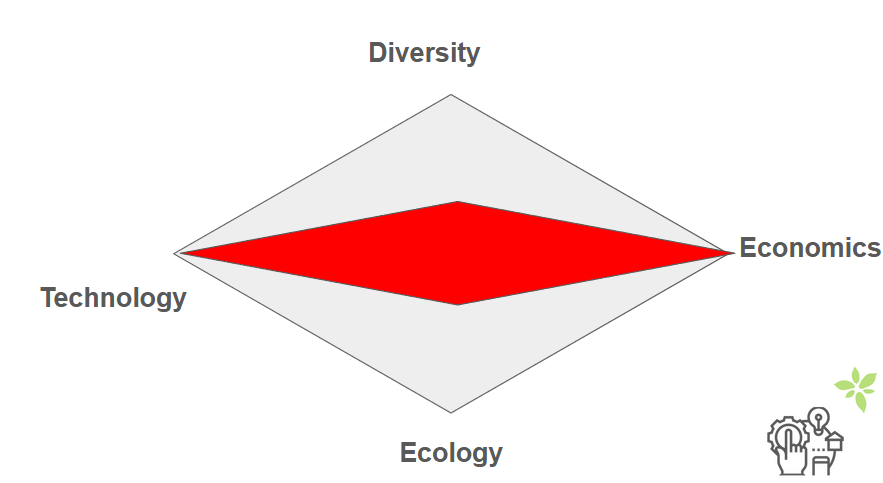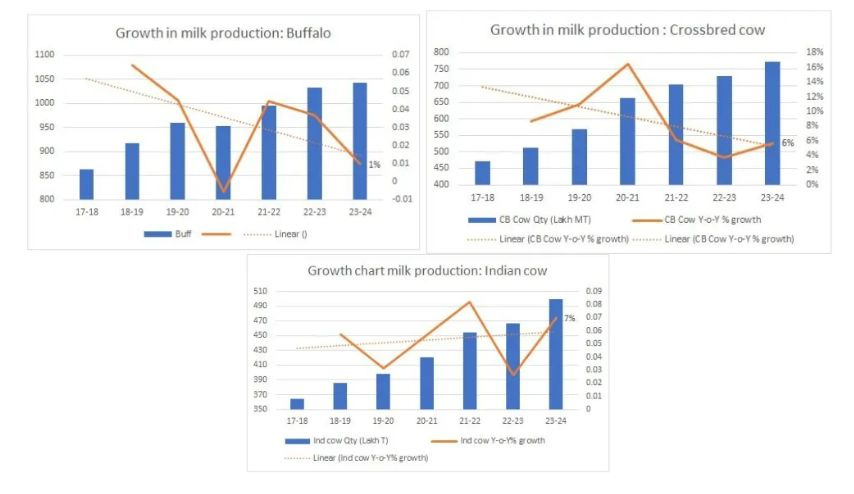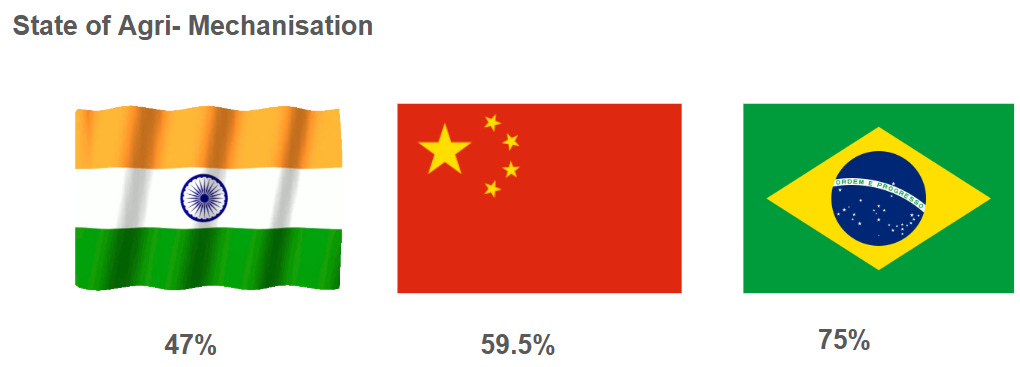
State of Agritech - 10th February 2025
1/ Biochar is Overrated And Other Radical Thoughts of Debal Deb
Traditionally speaking, the world of agribusiness has often been at loggerheads with activists. Agribusiness folks hate activists and activists hate agribusiness folks.
Having been an activist in my previous lives, wearing my hat of agritech analyst, I stand in the middle path: Activists work where markets fail and Agribusiness works where the State fails.
I pay deep attention to the learnings of activists like Debal Deb, even though he may be an uncompromising idealist, unwilling to take reasonable trade-offs for moving the needle of the agriculture ecosystem (Ag Overton Window) across the agroecology spectrum from Precision Agriculture (bottom left) to Agroecology (top right).
He recently wrote an email in a forum I’m part of:
“My view of agroecology has remained the same over the past 30 years (since I began agroecological practice), which I continue to propound to every farmer and NGO friends I come across: that a genuine sustainable agriculture
(a) must aim to achieve zero external input agricultural production (this means zero machinery, zero fossil fuel, zero agrochemicals, zero seed supply from market, and zero macro- and micro-credit);(b) must incorporate multiple crop and non-crop species, both simultaneously and in rotation;
(c) must incorporate multiple landraces of each crop (as many as possible); and
(d) no eradication of any local flora and fauna (this means complete elimination of "weed" and "pest" populations is forbidden).
This position is based on solid ecological evidence of 'species deletion stability' analyses, estimation of resilience (from 'return time' analysis) and analyses of community resistance to perturbations. In addition to the mathematical ecological findings, a mountain of experimental evidence consolidated my conviction.To further convince myself, I conducted rigorous field experiments to test my conviction.
These experiments included (1) the functions of biochar in agricultural productivity; (2) the applicability of the system of rice intensification (SRI) to rainfed rice cultivation during aman/ kharif season; (3) the conformity of SRI with agroecological principles, and (4) the yield efficiency of multiple cropping (MC) over sole crop (SC) or monoculture farming, and a few others.
Each of these experiments have been published in renowned peer-reviewed journals, and I am proud to share with you that these papers were reviewed by doyens of agricultural science such as Prof. Stephen Gliessman, Prof. Normal Uphoff, Prof. Kazuhiro Kobayashi and Prof. Bruce Ferguson. I am sharing these works with you as a guide and directive to the practice of agroecology.
Here is a quick glimpse of the research he published:
The Function of Biochar in Agricultural Productivity:
Biochar generally improves soil quality and crop yields, but results can vary. The factors affecting biochar's effectiveness are a)Type of biochar feedstock b) Pyrolysis process c) Soil nutrient status d) Crop species. Biochar adsorbs ammonia and phosphates in soil and promotes the growth of phosphorus-solubilizing microbes (PSM). Soil nutrient status is the most important factor in biochar's effectiveness. Biochar and PSM significantly increase yields in phosphorus-deficient soils. In phosphorus-rich soils, biochar has little to no effect on crop yield. A mathematical model explains that Biochar enhances PSM activity and improves crop productivity in P-deficient soils. Biochar is ineffective for P mobilization in P-rich soils
The incompatibility of SRI to agroecology:
“SRI (System of Rice Intensification) can increase rice yield while using less water compared to conventional farming. However, SRI has some drawbacks: It promotes rice monocultures and weed eradication, which reduce farm biodiversity. Most SRI farmers still use agrochemicals. The recommended weeding machine (cono weeder) is too expensive for poor farmers, leading them to use harmful herbicides instead. In areas without surface water, SRI requires pumps that deplete groundwater and produce greenhouse gases.”
Comparing the Yield and Efficiency of Multi-Cropping Systems Over Monoculture
“This study compared traditional multiple cropping (growing multiple crops together) with monoculture (growing a single crop) for seven different crops in India. The goal was to see which method was more productive. The researchers found that growing crops in a mixed, diverse arrangement (where each row and column has a mix of crops) was much more productive than growing them in rows of single crops or growing them separately.”
If the implications of these studies are deeply understood, they would mean reorienting how we approach agricultural mechanisation. These studies align with Shashi Kumar, CEO of Akshayakalpa’s Kite Analysis theory of Indian Agriculture.
For the kite called Indian Agriculture to soar to its heights and discover its fullest potential, there needs to be a balance between its four sides viz., Diversity, Economics, Technology and Ecology. Currently, Indian Agriculture is at the risk of irreversible decline for we are overindexing the sides of Technology and Economics at the cost of Diversity and Ecology.
Can the kite rediscover its balance and soar once more? We’ll find out.
02/ Verghese Kurien Must Be Turning In His Grave
Indian Milk Production seems to have come a full cycle.
From being milk deficient to becoming milk surplus, we have re-entered the plateauing phase. For the predicament we - the world’s largest milk producer- are now facing, Verghese Kurien must be turning in his grave!
The milk production growth rate has steadily decreased over the years:
FY18 (2017-18): 6.62%
FY22 (2021-22): 5.77%
FY23 (2022-23): 3.83%
FY24 (2023-24): 3.78% (Data Source)
The deceleration is led largely by buffaloes and cross-bred cows.
"1). Growth of A2 milk production by buffaloes, contributing 45% of total milk produced in 2023-24, is down from 51% in 2016-17. And is in the doldrums with a growth(!) of 1% last year.
2) Trend in the growth of A1 milk production by the so-called crossbred cows which now contribute 33% (up from 28%) in the same period is on a clear downtrend.
3) The only growth in trend in A2 milk production is seen in Indian cows. ( a mere 22% of total milk produced, hence insignificant)" - S RAJESHWARAN
I wonder how Verghese Kurien would have reacted today if he had come to know that NDDB imported 40,000 doses of bull semen from Brazil to enhance the population of native breeds like Gir and Kankrej, which are known for their high milk yield and adaptability to extreme climates.
Mind you, these breeds, originally from India, have been preserved and improved in Brazil over centuries and now produce significantly higher milk yields compared to their counterparts in India.
The imported semen can increase the average milk yield of Indian cows, which currently stands at around 8 litres per day, compared to 20-22 litres in Brazil.
While the "White Revolution" remains a sacred cow (sic!!) in India, the truth of the matter is that the White Revolution eliminated indigenous breeds of cattle to increase milk production and now bullocks are facing an "existential crisis", as a recent beautiful piece by GFM put it, with sex-sorted semen.
If the word of the Indian Government were to be taken as gospel, it would take at least 25 years for her to achieve 75-80 per cent mechanisation from the present level of 47 per cent.
Should we sacrifice Indian bulls to grow agri-mechanisation in India? Is this the inevitable future for Indian dairy?
03/ Say Hello to India’s New Cotton Brand: Kasturi Cotton
In bearish times for Indian Cotton, Kasturi Cotton is a laudable effort - a specification-based Indian farm cotton brand, characterized by long-staple cotton of 30+mm and 29+mm
Kasturi Cotton is a premium Indian cotton brand renowned for its long staple length and high-quality standards. It undergoes rigorous testing and certification to meet specific benchmarks for properties such as fibre strength, uniformity, and cleanliness. The programme employs blockchain technology and QR codes to ensure full traceability and transparency throughout the supply chain. By consistently providing superior cotton that is verifiably grown in India and traceable from farm to finished product, Kasturi Cotton aims to deliver benefits to the textile industry, consumers, and farmers alike. The brand promises to offer cotton that produces softer, more lustrous, colourful, strong, and durable fabrics while also supporting best practices and improved remuneration for cotton farmers. {Summarized from their website}
Building a brand is a twenty-five-year game. Are the folks behind Kasturi Cotton ready to slog it out?
04/ Inside BharatAgri’s Horizontal E-Commerce Gameplay
When Siddharth tweeted that BharatAgri sold to 200000 farmers Rs. 33 crores (~$3.8 Mn) worth of agri-inputs in 2024, I wanted to understand the breakup.
With CP and CN dominated by 40% of organic products, it is interesting to observe all three generations of biologicals at play.
So, what do you think?
How happy are you with today’s edition? I would love to get your candid feedback. Your feedback will be anonymous. Two questions. 1 Minute. Thanks.🙏
💗 If you like “Agribusiness Matters”, please click on Like at the bottom and share it with your friend.






